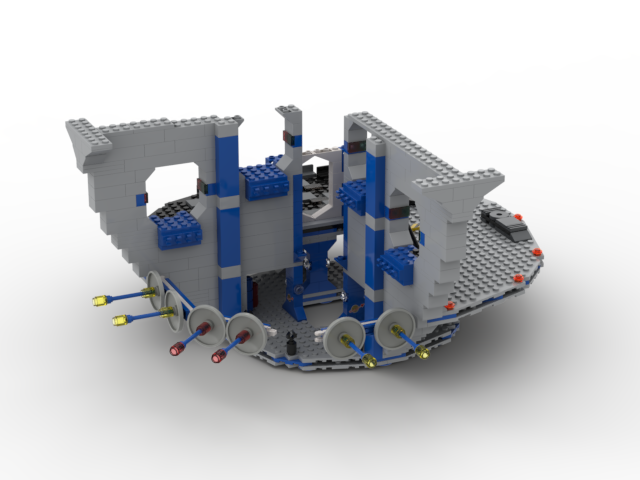After the construction of PSO and the “Waterworld” (-> This is unfortunately not yet documented, so I can’t write about it yet), I now have a plan for a bigger construction project. I will convert the LEGO Set 75159 Death Star UCS into a space base. The space base will then be used in the Gamma System (star RX J1856) to explore the exploitation potential of a neutron star.
The idea is to take over the basic structure of the 75159 set and then re-do the individual rooms in ClassicSpace style, e.g. with a small hanger for a research ship, naturally many antennas and sensors, laboratories, measuring stations, research facilities, crew quarters, camps, etc.
Since the set is quite big and I have hardly any parts that fit, this will be the first digital model in a long time. I plan to develop the essential elements in Stud.io and then over time buy and build the parts.
At the moment I’m busy building the set 75159 in Stud.io and some things are already being adjusted.
Update
While progressing in building the basic structure, I started also to change the color code and set-up first rooms on the lower main floor:
- Small Hangar for a SunHopper
- Heliophysics Lab with capacity to investigate samples for materials returned by the SunHopper and SuClipper
- Antenna Array
- In general more antennas

We also see on the middle floor a second hanger but this is not certain yet
Finished
So during my vacation week in November I was able to finish the Stud.io model. In total the digital model has 4092 parts and is therefore my biggest MOC so far. But with the template it is not surprising:

The space station has
- On the lowest deck a storage room
- A Helio-Physics laboratory on the first deck
- A hangar for the SunHopper
- The Main Reactor
- One controllable antenna
- The large antenna array
- Crew accommodation with sleeping berths, lockers, lounge, …
- Main antenna with control computer
- A hangar for the NeutronJet
- Central operations
- Controllable Helio-Physics Antennas
- Droid-Repair Workshop
- Meeting room
- Control room for the main antenna
Of course the space station is very similar to the original model, has the same room layout and also the room / deck sizes are the same, the rooms were simply equipped differently:
Lower Deck

Except for the color scheme, little has changed in the lower deck compared to the original. I might add some more containers, parts while building, robot etc., maybe a small car or a small glider, we’ll see.
1st Floor Deck
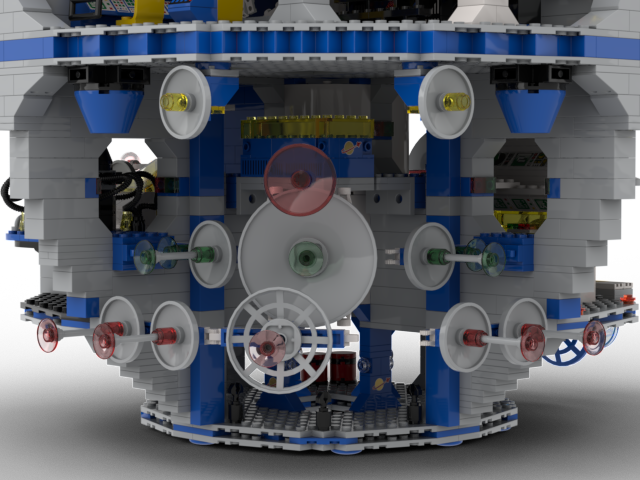
The large antenna deck consists of two antenna strips and some smaller steerable side antennas. The antenna array is mainly used to record the gravitational waves of the neutron star. This is especially intended to record physical processes inside RX J1856. in potential combination with other antennas of the StarBase, which measure in different wavelength of the spectrum, the science team is getting every day a better understanding of RX J1856.
Antenna control and calibration is performed by high-performance computers from the platform in the rear deck area. The elaborate and dedicated control by some computer system is necessary to detect the slightest fluctuations in the space-time continuum.
The analysis of the date is done in the Helio-Physics Lab.
Hint: The picture of the plans provide a misleading view, each arm of the array will be connected with each other.

The Helio-Physics Lab runs the various simulation and result analysis coming in from the antenna array.
It allows to analyse samples from the residual material of the supernova forming the neutron star. The samples are collect by the SunHopper and powerful mass spectrometers in the Helio-Physics Lab can break them down on atom level and provide a complete history of the elements. And it seems, the dust in the NeutronStar System contains valuable materials that can be harvest.
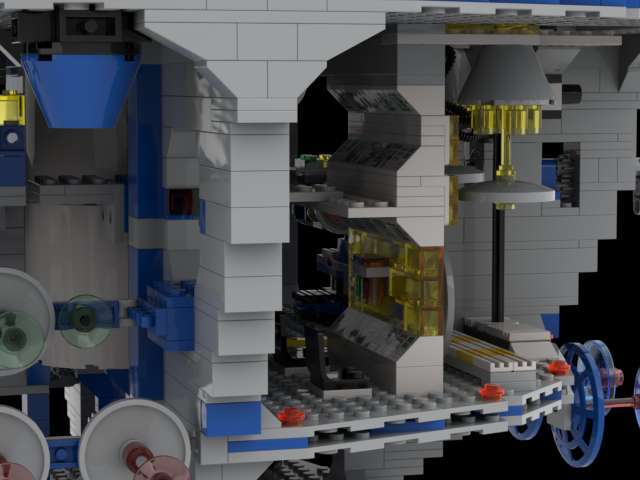
And first simulation done in the Helio-Physics lab show, that the Neutronstar can be harvested for energy. Thus a mining space station, collecting the dust and small debris still floating through system and processing it, could become reality.

The main reactor supplies the space station with energy. Since there is no easy way to use the neutron star for energy generation at the moment, the space station is supplied with energy by a fusion reactor. The reactors of the latest generation are quite compact and require little maintenance. Therefore the reactor can be monitored and controlled from the control room.

In order to better investigate the Neutron Star, a SunHopper is also operating from the StarBase. The SunHopper has a dedicated hanger, that allows repairs and re-fueling. The rotating platform allows to access the SunHopper resp makes it easy for it to land and start. The approach to hanger is controlled by the two approach radars (grey dish with green transmitters) as of course a collision would have a devastating effect this far away from home. When the SunHopper has collected samples, they can immediately be transported to HelioPhysics Lab next door for analysis. The missions are in principle controlled from the main control room.

The smaller steerable antenna is used SAR radar to better investigate the various asteroids in the star system. The SAR provides a high resolution image of the source. The antenna can also be switched into a ground penetration mode and thus provide information on the inner structure of the asteroids. Thus it helps to identify possible exploration targets for asteroid mining missions.
2nd Floor
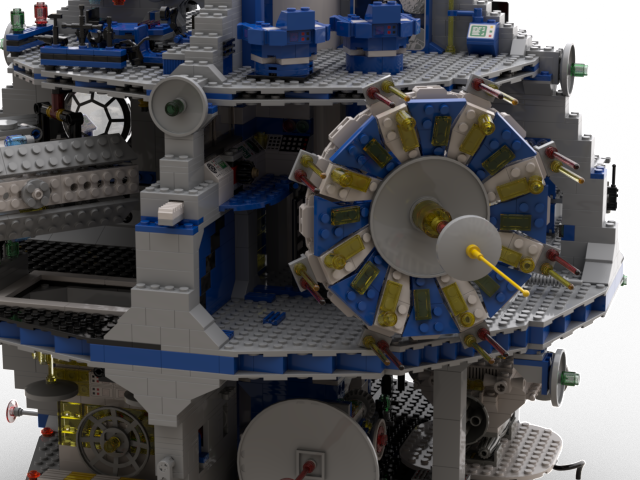
The main antenna is the main instrument of the StarBase and is used to study the neutron star. The antenna allows to scan the star in different frequency ranges. At the same time the main antenna is also an active instrument, which irradiates the star with different frequencies and analyzes the corresponding echoes. Due to the size and the various subapertures the main antenna achieves a resolution over a huge spectrum never reached before.
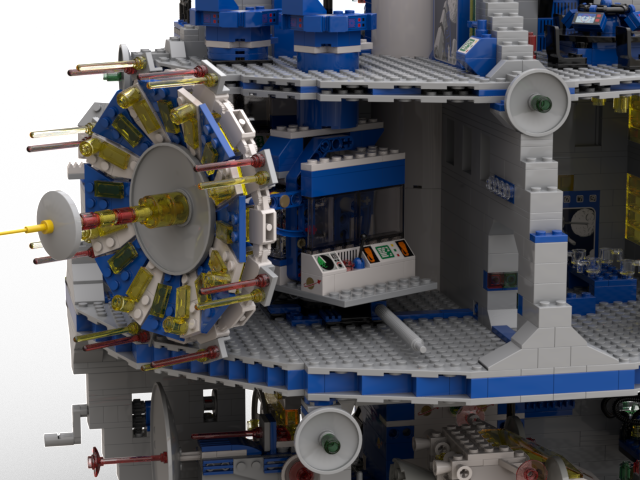
However, the various subaperatures, receivers and transmitters must be synchronized with each other in a complex way. This is done by special computers located directly behind the antenna to minimise the signals delays and to controls them without any loss of time.
The antenna controls are located in the deck above the antenna.
The measurement results are recorded and evaluated in the main control center.
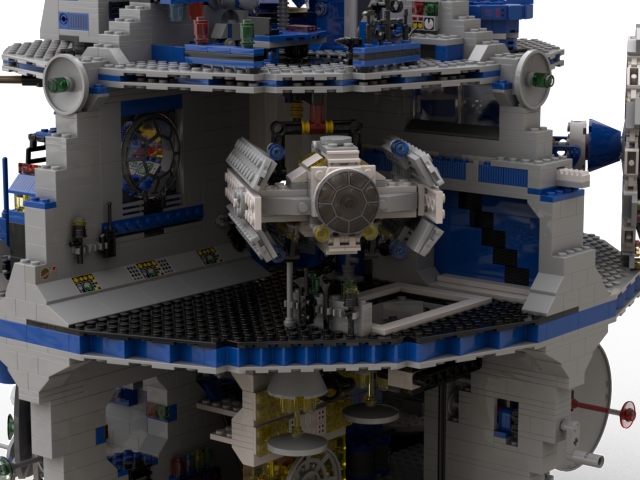
In addition to the SunHopper the NeutronJet was built. Thanks to its special shape and construction the NeutronJet can fly much closer to the neutron star than the SunHopper. However, as a result it is usually exposed to high levels of radiation and has to be decontaminated at great expense. The crane ensures that the ground etc. is not further contaminated. The floor hatch allows to analyze any samples directly in the Helio-Lab.

The crew’s bedrooms and lounges are kept quite simple. There are some beds to sleep on, a table for eating and compartments for personal belongings. The large monitor keeps the crew up to date during their breaks. The base runs in a 2-shift operation, i.e. 12 hours of waking and 12 hours of sleeping. The beds are shared, but are self-cleaning, so that everyone always slips into a freshly made bed. The lounge also has a direct slide to the hanger of the SunClipper, just in case you need to get up quickly
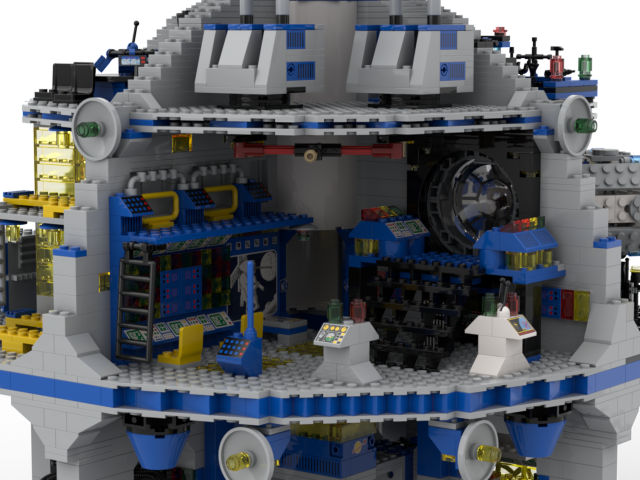
The two main scientific instruments, the two antennas, as well as the other operations of the space station are controlled and coordinated from the control center. The large computer wall is mainly used for the control and data evaluation of the two large antennas. The individual small consoles are mainly used for monitoring the station. The space ship missions and the hangars are controlled from the gallery, with a direct view of one of the hangars.
Uppderdeck

The antenna control is located above the main antenna. This is where the technicians are located who then align the main antenna under the guidance of the scientists from the control center. This, in turn, must be precisely coordinated with the synchronization computers of the main antenna, as otherwise there may be severe interference in the antenna system.
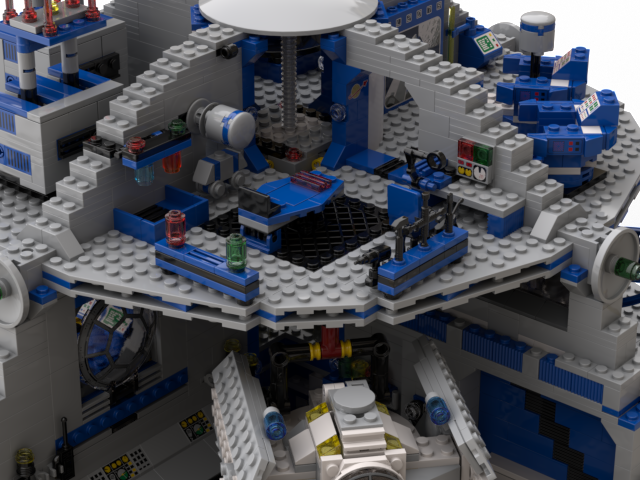
The workshop mainly repairs the robots used in the base and on the space ship missions. Because of the hard radiation near the neutron star the robots fail again and again. But also possible repairs of devices, computers or other equipment are done here.

In the conference room, the daily situation meetings take place, but also shift handovers or mission planning. The scientists also meet here to discuss their results and plan further research.

The second large antenna system is the steerable Helio-Physics antenna consisting of two sub-antennas. The antennas are directed synchronously at the object and then fire a series of pulses of different frequencies to analyze the echoes accordingly. Sometimes the main antenna or the antenna array is also used as an additional receiver. Depending on the procedure, measurements can take seconds, hours or even days. The antennas are also controlled from the control center.
The digital model is now finished, the next step is to convert the digital into the analog …. But before the conversion the next step is the creation of the manual from the digital model in stud.io

